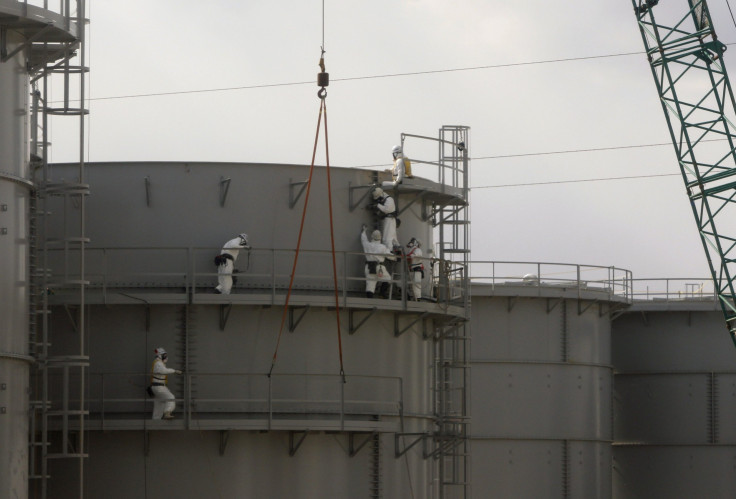Fukushima Leaks ‘Highly Radioactive’ Water Into Ocean, Declared An Emergency By Japan’s Nuclear Body

Contaminated groundwater from Japan's Fukushima nuclear plant has breached an underground barrier and is now threatening to exceed legal limits of radioactivity in the ocean water, Reuters reports.
Although potential threats from the leak have not been established, Tokyo Electric Power Company has taken preventative measures to create a temporary block of the leak. However, the solution has been criticized as weak and ineffective.
Tepco's "sense of crisis is weak," said Shinji Kinjo, head of a Nuclear Regulatory Authority (NRA) task force. "This is why you can't just leave it up to Tepco alone" to manage the ongoing disaster.
"Right now, we have an emergency," he added.
Current approximations say a cumulative 20 trillion to 40 trillion becquerels of radioactive tritium have leaked into the sea already. A becquerel is defined as a unit of radioactivity, where the quantity of radioactive material in which one nucleus decays per second, according to United Press International.
Read more: Antibiotic Found In Ocean Mud: 'American Riviera' Yields Drug Effective Against Anthrax, Other Bacteria
While this still places the leak within legal limits, many experts fear the damage could accelerate if and when the barrier submits to the pressure. Plant workers created the barrier by injecting chemicals to harden around the base of the No. 1 reactor building. However, the area hardened only extended 1.8 meters deep.
"If you build a wall, of course the water is going to accumulate there. And there is no other way for the water to go but up or sideways and eventually lead to the ocean," said Masashi Goto, a retired Toshiba Corp nuclear engineer who worked on several Tepco plants. "So now, the question is how long do we have?"
Some estimates peg the water reaching the surface in three weeks' time. Shinjo said the three-week timeframe was not part of NRA's calculations, but conceded that the water "would flow extremely fast" if it does reach the surface.
"Until we know the exact density and volume of the water that's flowing out, I honestly can't speculate on the impact on the sea," said Mitsuo Uematsu from the Center for International Collaboration, Atmosphere and Ocean Research Institute at the University of Tokyo. "We also should check what the levels are like in the sea water. If it's only inside the port and it's not flowing out into the sea, it may not spread as widely as some fear."
Read more: Fukushima Nuclear Power Plant Steams, As Photos Of Deformed Vegetables Circulate On The Web [PHOTOS]
The leak originated from the plant's habitual pumping of 400 metric tons of groundwater from the hills above the Fukushima Daiichi nuclear plant into the basements of the destroyed buildings, according to Reuters, which mixes with highly irradiated water that is used to cool the reactors in a stable state below 100°C.
Despite its best efforts, Tepco has had to admit to the leaks following surges of radioactive elements in the sea water.
"The handling of the contaminated water is an extremely pressing issue. But the ongoing measures are still inadequate and uncertain," said authority Chairman Shuichi Tanaka. "We must make sure that the contaminated water storage plans will not fall apart."
Read more: Shallow Water Injuries At The Beach Send Many To The Emergency Room
According to the plant, tritium is far less harmful than cesium and strontium; however, both of the more dangerous compounds have also been released, though in smaller quantities. The plant said it has plans to test strontium levels.
Still, one official, as quoted in the Asahi Shimbun, advises people not to worry about the leak's effects.
"There is only a minor effect on the environment," the Tepco official said, "because it is about the same level as the upper limits of emission standards during operating periods."
Fukushima has been criticized in the past for ill-preparedness and shoddy attention to security measures, following the devastating 2011 tsunami and resulting earthquake that caused massive equipment failures, nuclear meltdowns, and the release of such high levels of radioactive materials that the disaster ranks second behind the Chernobyl disaster of 1986.
Chernobyl and Fukushima are the only two nuclear disasters ever to have measured Level 7 on the International Nuclear Event Scale.



























